Flushing cannabis plants
List of contents
- Flushing your cannabis plants
- Why flush cannabis?
- How to flush cannabis plants
- How does cannabis respond to flushing?
- How to prevent flushing cannabis
- Flushing and pH/EC
- When should flushing be avoided?
- Flushing cannabis with organic solid nutrients
- Why are enzymes good for cannabis?
- Nutrients and cannabis leafs
Flushing your cannabis plants
Cannabis is one of the few plants in the world, together with the vine, which contains a large number of terpenes. When mixed, these terpenes generate new flavours and smells that caress the taste buds like candy. To obtain this type of flavour and enjoy buds of the best quality, you must make sure the plants are nutrient-free at the moment of the harvest.
If the plants have an excess of nutrients in their metabolism, the organoleptic properties of the buds will be ruined by the high amount of salts accumulated in them. When combustion takes place, it will release harmful particles that, aside from leaving a bad and very unpleasant taste in your mouth, could make the joint spark due to the excess of mineral salts.
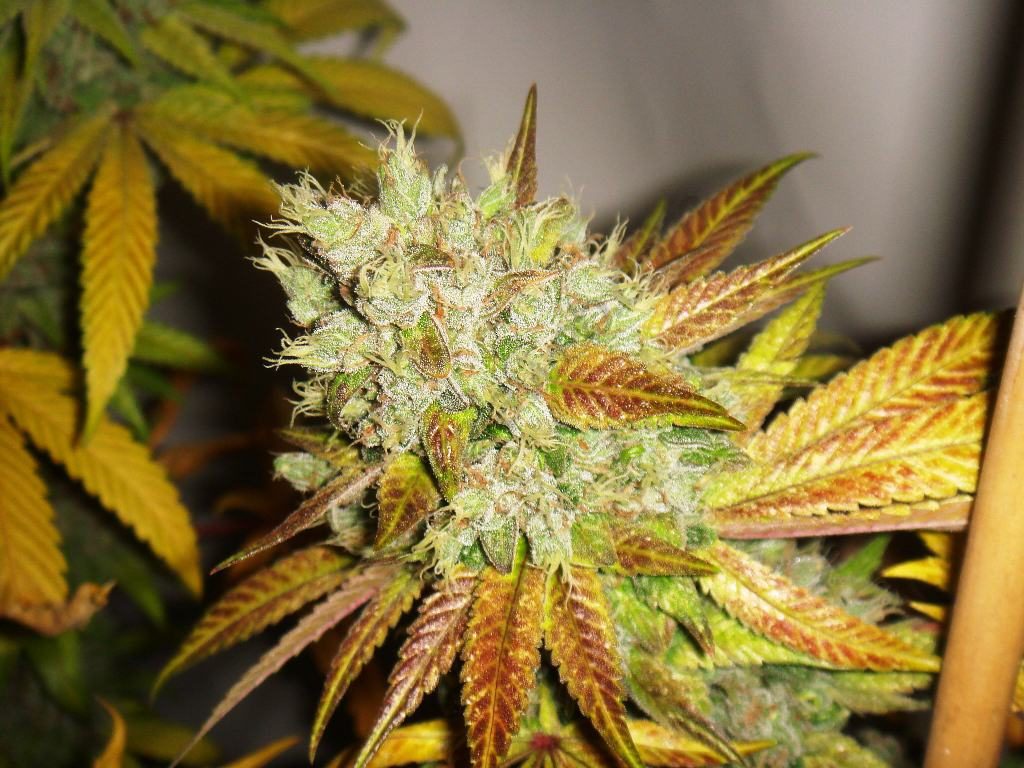
Why flush cannabis?
During their lives, cannabis plants are often fed with nutrients in varying amounts, according to their life stage. The feeding curve goes from less to more until it reaches the peak of nutrition, around weeks 6-7 of the flowering period depending on their genetics, and from that moment on, the cannabis’ needs subside considerably.
When the plants no longer require nutrients you should stop feeding them, because even they don't need it, they'd eventually absorb it and save it in their metabolism for the future. If the plants absorb too many fertilizers at the end of their life cycle, their leaves will look dark green; this means their buds won't have their original flavour when compared to the same plants with yellow, clean leaves. In this case, flushing will be extremely necessary to reduce the amount of nutrients in their metabolism and to improve the flavour of the buds.
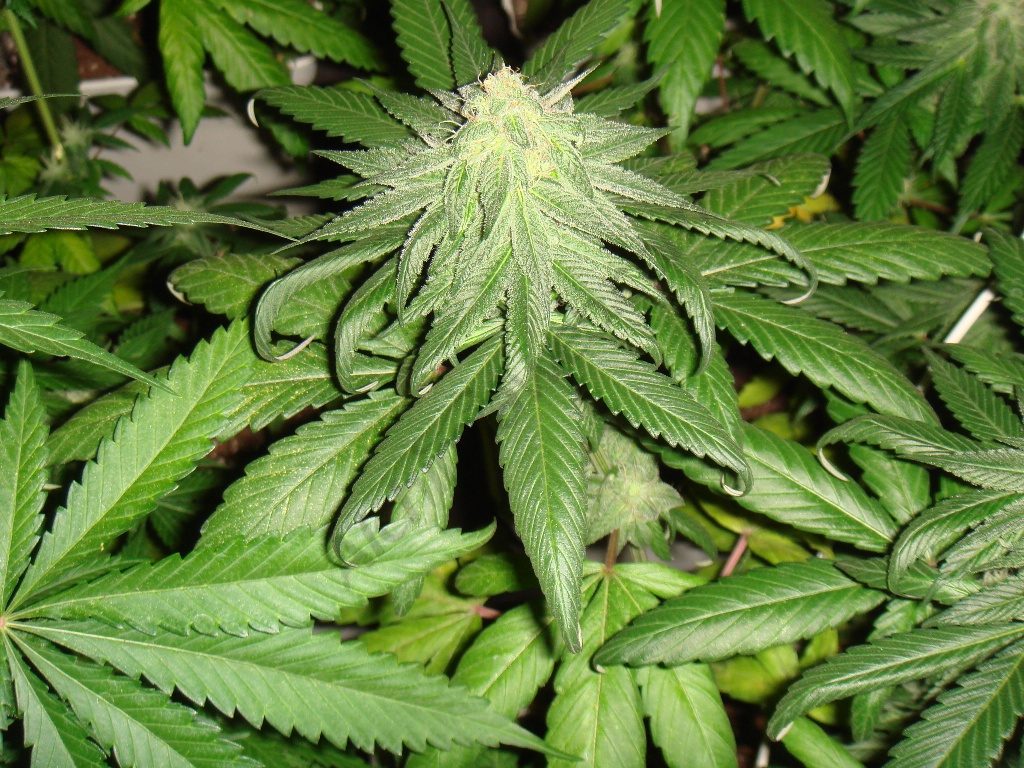
How to flush cannabis plants
Flushing consists of providing a large amount of water to the substrate in order to leach off the soil, coco, expanded clay, perlite, or any other type of substrate used. To eliminate the nutrients attached to it, the amount of water used should treble the pot capacity. There is no exact number of litres, and it also depends on the feeding schedule used for your plants.
If you normally use an intensive nutritional program throughout the entire cycle, with high EC levels, you should then flush your plants more abundantly than if you are using lower EC rates. To know whether the substrate's EC levels are high, medium or low, you should water according to the corresponding EC levels from a regular nutritional program, and then measure the EC of the drainage water after watering.
To measure the EC of the drainage water, fill a glass with the runoff water that comes out from the bottom of the pot and check it with an EC meter. If the drainage EC levels are higher than those of the irrigation water, the meter is telling you that your substrate is accumulating salts.
Now that you know there is a nutrient imbalance, you need to reduce their concentration in the substrate by providing it with large amounts of water. The water used to leach off the roots must have the lowest EC possible; tap water has an EC of 0.3-0.4. If your tap water has a very high EC, you'll have no alternative but to use low mineralization, RO or distilled water to perform more effective flushing.
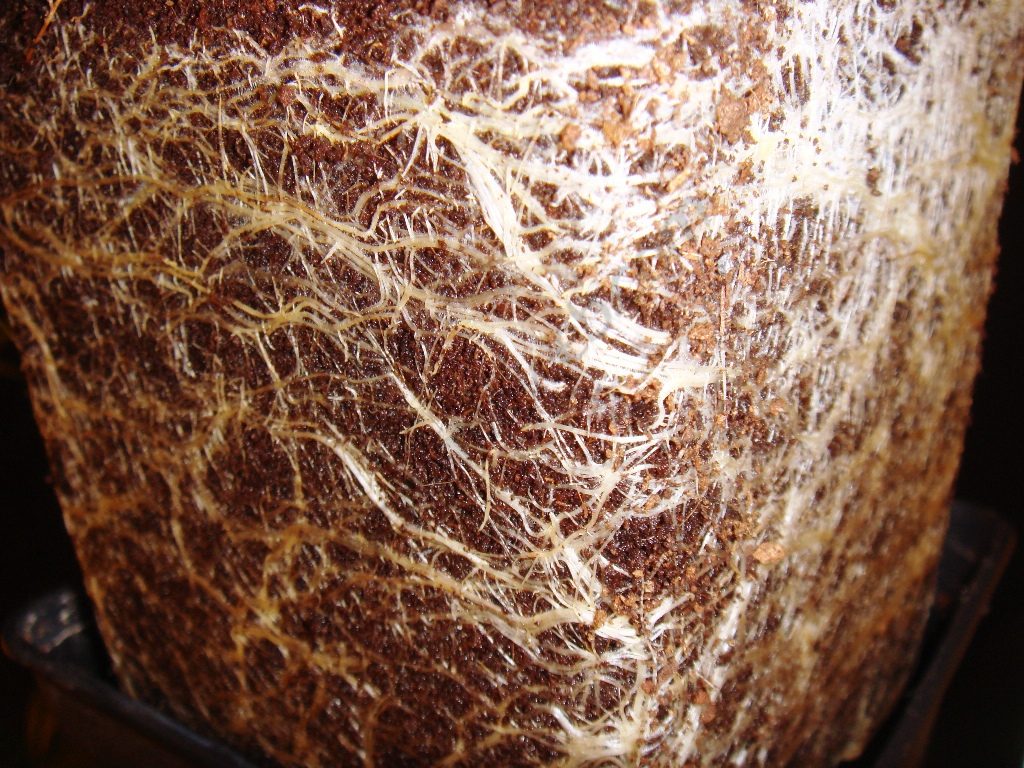
Water the plant and collect the runoff water and measure its EC again. On this occasion, you'll see that the EC levels are much lower than before flushing. If the drainage water has an EC of 0.5-0.6, this means that you have managed to eliminate almost all the nutrients in the substrate, and that the plants can start evacuating them or using the nutrients in their metabolism without a problem.
How does cannabis respond to flushing?
Once the substrate is free of salts and fertilizers, the plants will notice through their roots that the nutrients have disappeared and there's a great imbalance between the plant's internal EC and that of the substrate.
In order for the plants to live well and feed properly, there must be a balance between both ECs. As we have previously mentioned, the plants have an internal EC level that should be similar to the EC of the substrate. In the absence of a balance between both ECs, the plants try to equilibrate them in their own way, but, how?
If a plant's EC level is lower than that of its substrate, the EC of the plant metabolism will tend to rise by absorbing the nutrients in the substrate, for example: Plant EC 1.5 and substrate EC 1.7, the plant will accept nutrients. Otherwise, when the EC of the substrate is lower than the plant's, the latter will evacuate some of its internal EC into the substrate through the roots, causing an increment of the substrate's EC until both ECs are almost equal.

Therefore, when you provide large amounts of water to the substrate, you are forcing the plants to evacuate their internal EC in a very radical way, since they go from having some nutritional stability to having none, and this causes a stress that might cause the development of small male flowers at the end of the cultivation period.
How to prevent flushing cannabis
To avoid flushing, you must keep in mind the nutrition of your cannabis plants throughout their life. You should avoid using high amounts of fertilizers since your plants will already provide you with some visual clues about their nutritional needs.
It should be understood that the feeding curve goes from less to more and from more to less, which means that, when the plants need less nutrients, you also have to give them a lower amount of food, and increase the quantity gradually as the plants keep developing; but you also must know when to reduce the feeding because it's unnecessary and counter-productive until harvest.
How do you know the exact amount of fertilizers your plants need? When using an EC meter, everything becomes easier, as you can use an EC table as a guide. This way, you'll know when to provide nutrients and in what concentrations, depending on the week number, and to avoid stressing your plants during their whole life cycle.
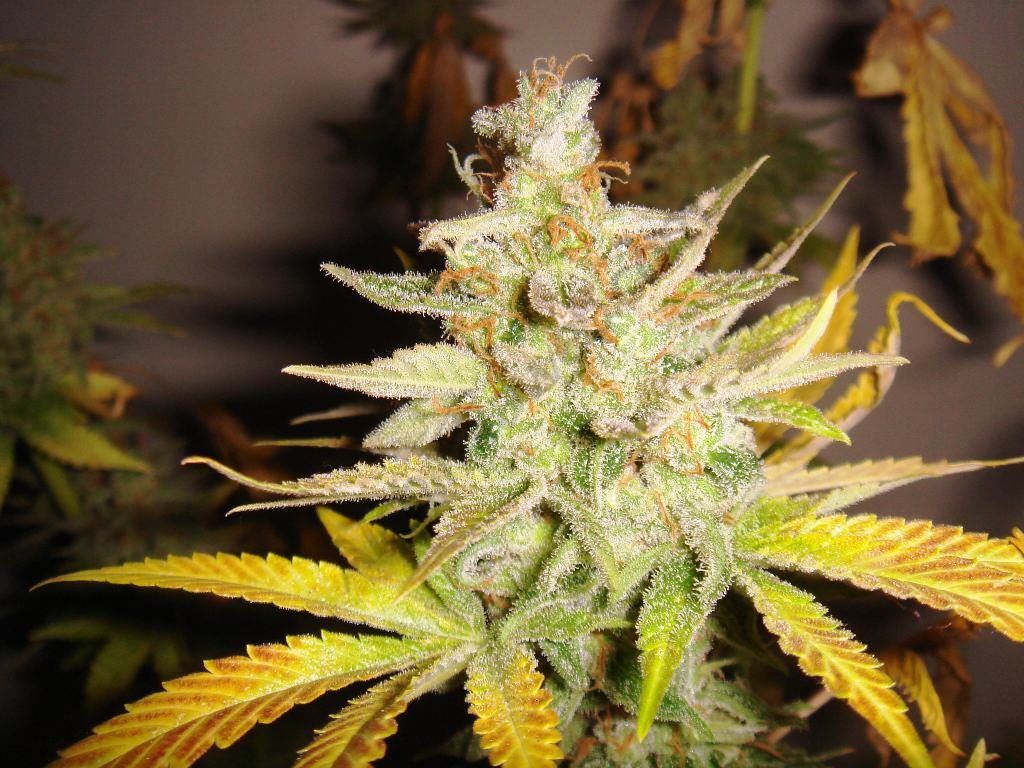
Flushing and pH/EC
Flushing can also be done during cultivation if your plants suffer from some type of nutrient imbalance, both during the growing and the flowering periods. In these scenarios, you need to take into account the pH of the substrate and the plant's EC, according to the phase of their life cycle. If the plants are in the vegetative phase, the water used for flushing should have a pH of 5.8, and if they are flowering, a pH of 6.0. Always use the lowest possible EC, so the nutrients evacuation is faster, and also the plants' recovery.
Using a stable pH for flushing will help the substrate to keep its balance, so when the plants recover from a nutrient lockout, they won't notice any PH changes and will continue to feed properly until the harvest. Remember the pH is the valve in charge of letting the nutrients go from the soil to the plant through their roots. Regardless of how much fertilizer you use, if the pH is wrong, your plants might develop nutrient deficiencies.
When should flushing be avoided?
The answer to this question is very simple: whenever the plants have a nice colour, their leaves are lax, the tips look healthy, etc., you won't need to flush, unless it's almost time for the harvest.
Some growers flush their plants before they start flowering in order to change the type of fertilizer, but this only makes the plants lose part of their stored nutrients. This loss prevents the plants from stretching properly, and they will start their flowering period without the extra nitrogen they need to develop the bud's structure from where the flowers will grow at a later time.
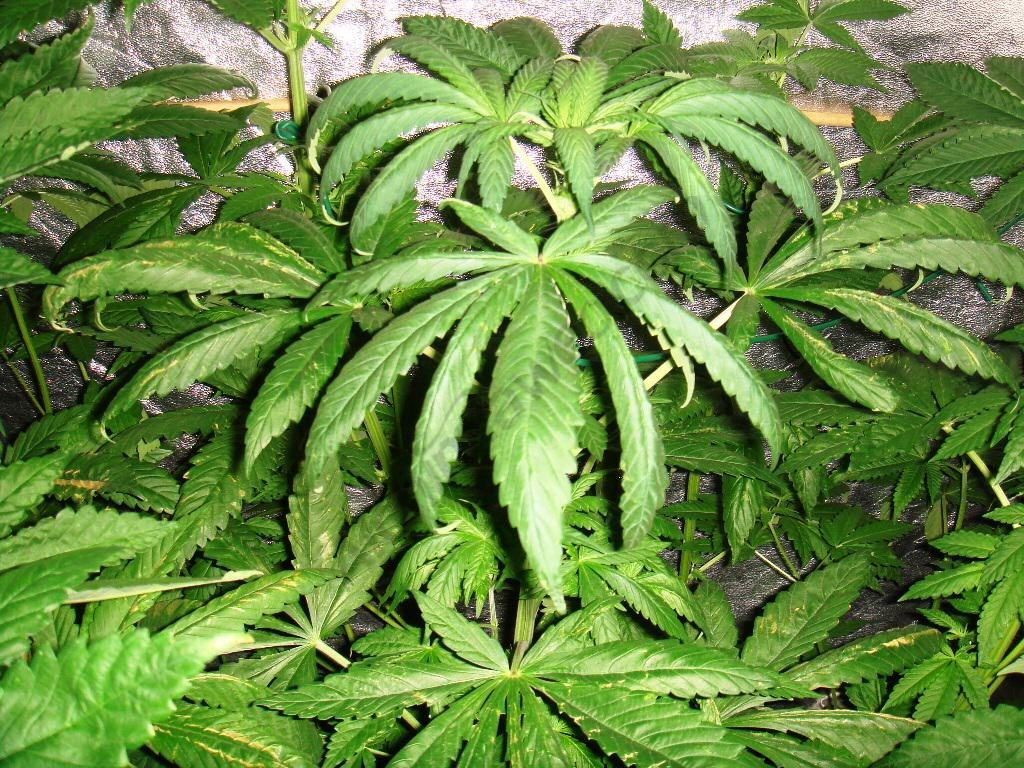
Flushing cannabis with organic solid nutrients
Bear in mind that using solid nutrients mixed in the soil is not the same as using liquid ones every time you water your plants. In the case of the liquid fertilizers, the process of flushing is the same as the one described above. However, if you use fertilizers in your soil, you need to properly control the doses the plants will need during cultivation.
If you don't pay attention to these doses, your plants will be completely green at the end of their life cycle, and their flavour, even though the fertilizers were organic, won't be as good as if they had been totally yellow before the harvest.
Why are enzymes good for cannabis?
Enzymes are a product made of molecules that derive from proteins and help to increase the chemical reactions rate in the plant's root system, turning the dead roots into assimilable compost by acting as a catalyst and speeding up the decomposition process and the assimilation of nutrients.
Enzymes protect the plant's root system and metabolism by preventing pathogens to destroy it. A good example of this occurs when a plant is attacked by the fungus Botrytis cinerea or grey mould. In this case, the fungus' enzymes try to penetrate the plant to conquer it and destroy it, but the plant's enzymatic reaction generates a fight, on an enzyme level, between the fungus and the plant.
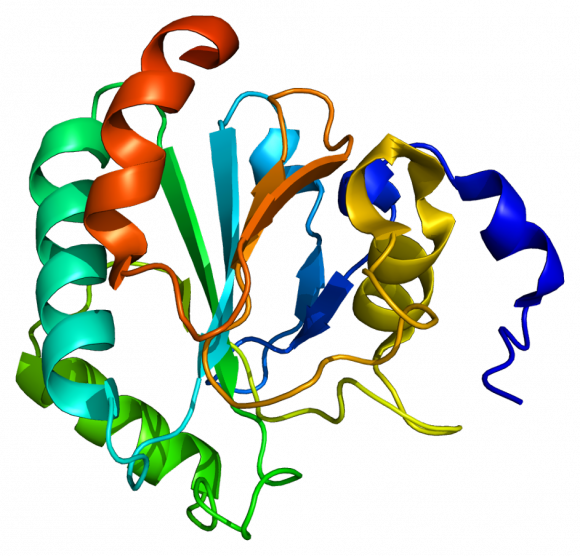
Put simply, this process can be described as a war in which the winner will be the contender with the highest ability to conquer the territory, in a similar way as the Trojan Horse. Today, researchers are conducting studies on enzymes that are able to destroy even the most powerful and devastating fungi, such as botrytis, which uses the enzyme laccase to fight against pterostilbene, an enzyme that plants use to defend themselves.
This fight triggers some toxic elements, namely, 3 different types that could kill the plants very quickly, as they enter their metabolism and reduce their own solubility in water, which means the plants won't be able to evacuate them. How do the plants respond to this invasive attack? The only chance they have to survive the fungus attack and the toxic elements that have entered their metabolism is to encapsulate these elements, causing an increase in their solubility so they can be evacuated from the plants' metabolism.
Because of this, it's very important that you use enzymes in your grow, like for example, Hesi Power Zyme, which helps the plant natural processes of nutrient decomposition and assimilation by actively intervening in the ion exchange between roots and nutrients. They can be largely used in organic crops, unless they are replaced by beneficial fungi, such as Trichoderma and endomycorrhiza among others, in order to prevent that other destructive fungi can kill the plants.
Nutrients and cannabis leafs
In this image, the colour of the leaves is normal, a healthy green which means that everything is going in the right direction; you should continue with the usual feed for now, following the nutrition program according to the week of the plant's life cycle. At this stage, you want to boost the root growth with phosphorus and a good dose of nitrogen, so they continue to grow properly.
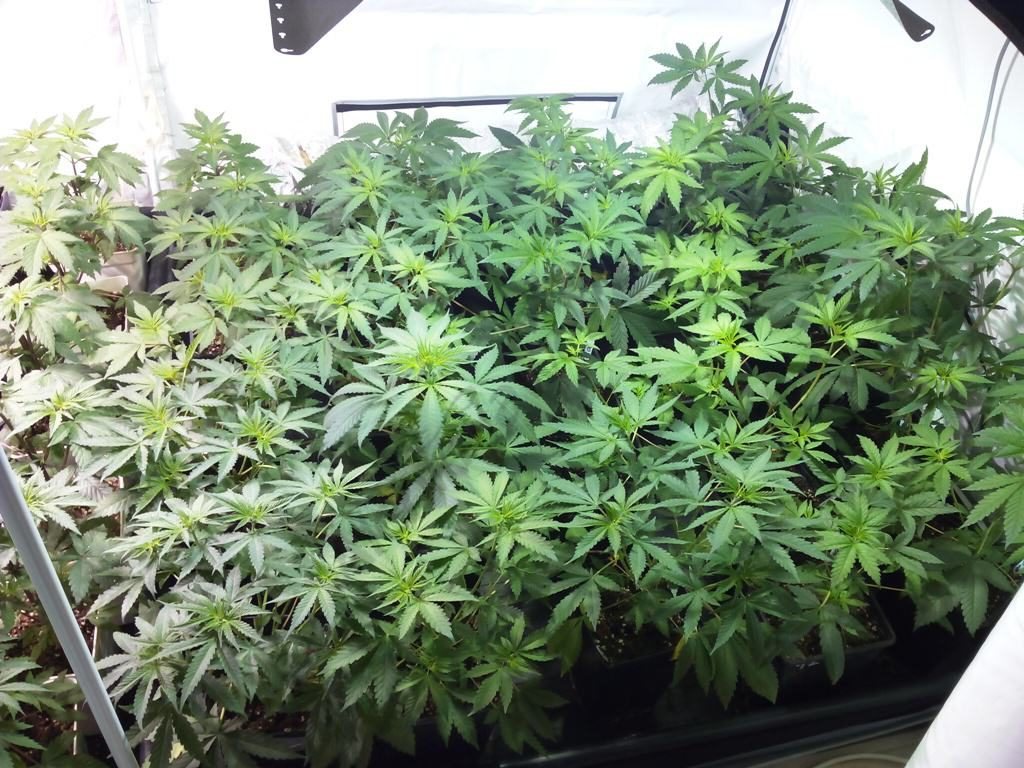
In the next image, the plants have started to flower. They stopped receiving nutrients for the growth phase and now they are obtaining fertilizers for the bloom stage, with no flushing whatsoever. In the lower part of the plants, we can see a slight deficit of nitrogen. This fact suggests there is limited nitrogen availability in the substrate, and the plants are using their reserves, which is ideal in order to free the plants from this nutrient in time for the harvest.

In this image, the plants are in a state of advanced flowering, around week 6, so they just need 2 more to be ready for the harvest. You can also see that the plants show more yellowish than green leaves, or at least, they have lost the bright green shade they presented during the growth and early flowering phases. As harvest time approaches, the will become more yellow.
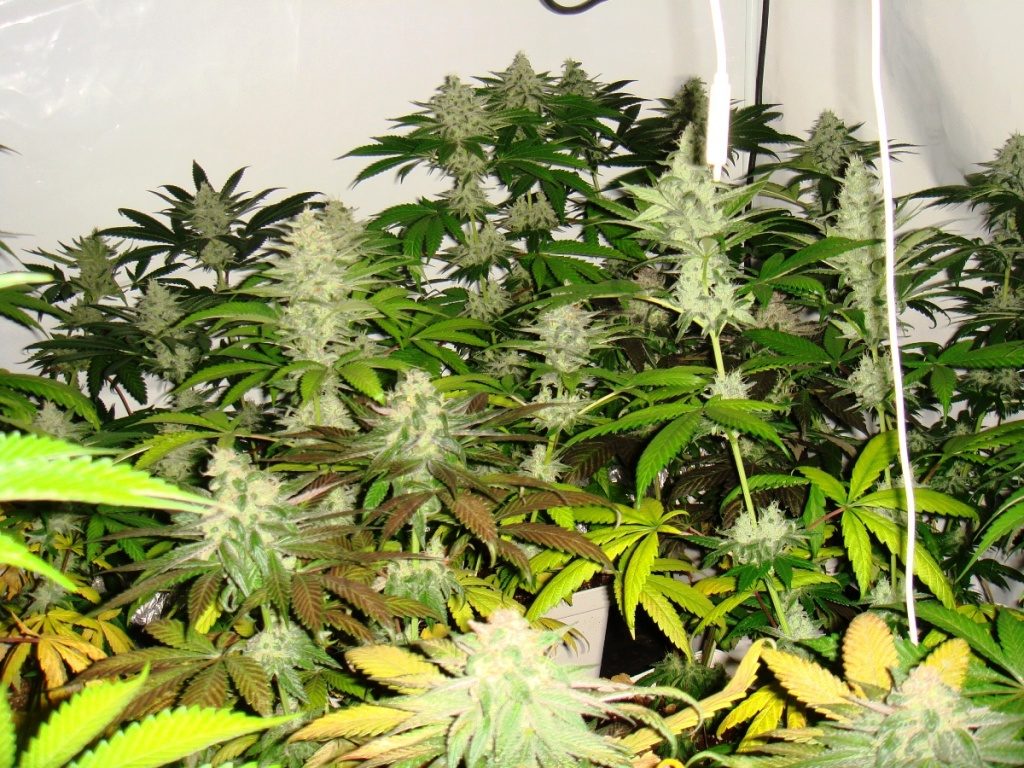
In this last picture, you can see how even those leaves that previously had a yellowish colour, have now fallen or dried up on the plants, making it crystal clear that no trace of fertilizer is left prior to the harvest. The plants offer a very fresh aroma, but to properly appreciate their flavour, you’ll need a good tasting marijuana session with the same genetics but providing them fertilizers till the end, and another plant thoroughly cleaned before harvest.
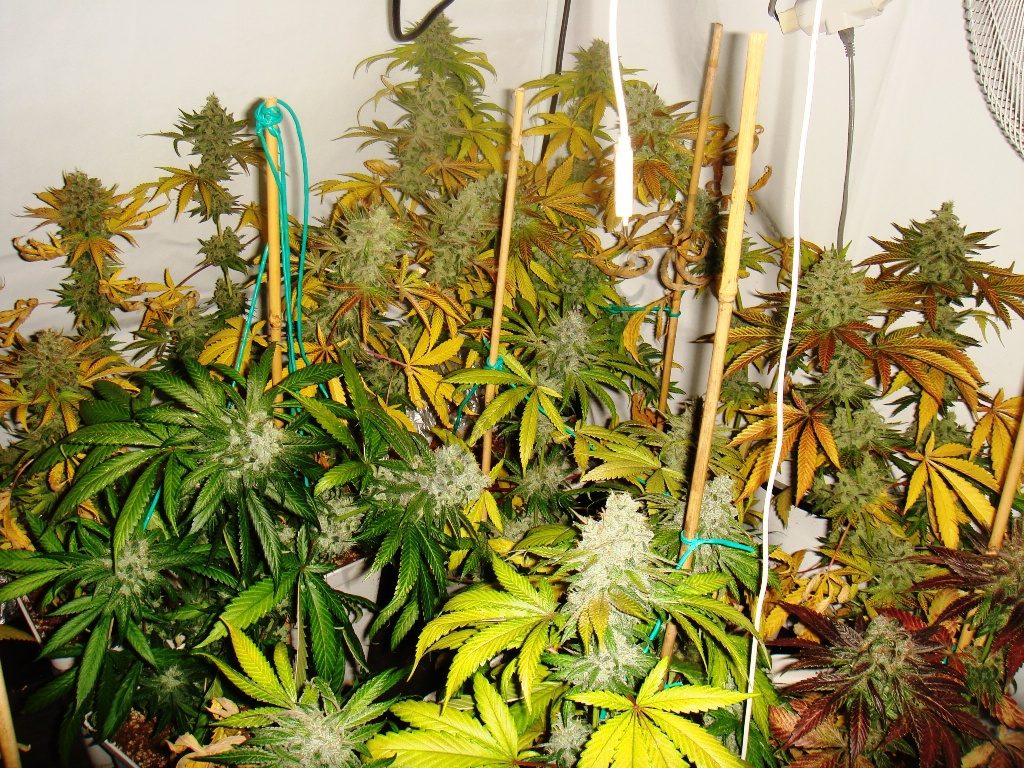
We hope this article will help you to know when to flush your plants, as well as being aware of the reasons for which it’s recommended.
Happy growing!
































































